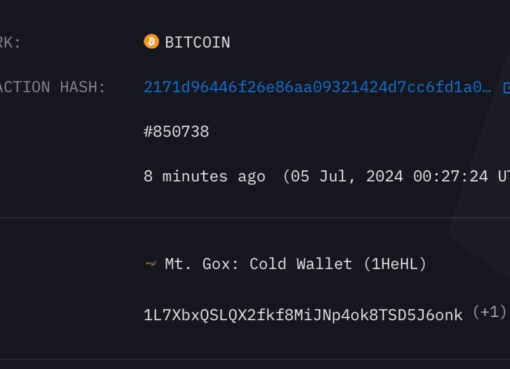Launched in 2017, Cardano is billed as a third-generation blockchain (following Bitcoin and Ethereum as the first and second generations, respectively) that aims to directly compete with Ethereum and other decentralized application platforms as a more scalable, secure and efficient alternative.
Decentralized applications are similar to applications on a smartphone. However, the main difference is dapps run autonomously without any third party operating in the background. They achieve this autonomy by using smart contracts – computer programs specifically designed to perform a function when certain predetermined conditions are met.
For example, you could create a collateralized borrowing dapp that loaned money to anyone provided they deposited an amount of collateral in a wallet beforehand. The smart contract, in this instance, would be programmed to send a transaction (the loan) to the borrower immediately after the collateral wallet received the right amount of funds. The smart contract could also be programmed to liquidate the collateral (keep the locked up funds) if the borrower failed to make repayments on time.
Cardano also touts itself as being the only extensively peer-reviewed blockchain platform in the industry and routinely publishes academic research papers on its website.
How does Cardano work?
Cardano’s native blockchain is divided into two separate layers to fulfill different tasks and improve overall efficiency. They are:
- Cardano Settlement Layer (CSL): Used for facilitating peer-to-peer transactions of ADA-native tokens
- Cardano Computational Layer (CCL): Used for executing smart contracts
The Cardano blockchain operates using a proof-of-stake (PoS) consensus mechanism for discovering new blocks and adding transaction data to the blockchain, called “Ouroboros.” This PoS system involves ADA holders locking up, aka “staking,” their coins in pools operated by other participants or becoming operators of stake pools themselves.
In order to create new blocks, Ouroboros uses a time-period system called “epochs” where each epoch lasts five days. Inside each epoch, there are 21,600 smaller units of time called slots, or one slot every 20 seconds. Stake pools are randomly assigned to each slot as a “slot leader” and tasked with creating a new block for that slot.
While anyone can run their own staking pool, it does require a level of technical expertise to do so successfully. Rewards for adding new blocks to the chain are distributed among the stake-pool operator and stakers after every epoch finishes (5 days), proportionate to how many coins are staked in the pool by each person.
The more coins collectively held in a stake pool, the greater the chance it will get randomly selected to become a slot leader and add the next block in the chain. Think of staked coins like lottery tickets. While having more tickets increases your chances of winning it doesn’t guarantee you will. To prevent giant pools from dominating the system, each staking pool is governed by a “saturation parameter” which essentially offers stake pools lower rewards once they reach a certain capacity to incentivize ADA stakers to relocate their coins to smaller pools.
This Ouroboros consensus system is completely different from Bitcoin’s proof-of-work (PoW) system, which requires users to compete using specialized computer equipment to discover the next block and has no built-in feature that discourages monopolistic mining operations (other than the fact that bitcoin’s value depends on its being controlled by no one).
Cardano development
The Cardano blockchain platform is still in development and plans to launch over the course of five separate stages:
- Byron: The “foundational phase” which saw the launch of the project’s ADA cryptocurrency and its native wallets, Yoroi and Daedalus.
- Shelley: The decentralization phase which introduced delegated staking and encouraged the growth of distributed stake pool operators.
- Goguen: This stage introduced the launch of Cardano smart contracts and custom fungible and non-fungible tokens.
- Basho: The “scalability phase” which will see the launch of sidechains running parallel to Cardano’s main blockchain.
- Voltaire: The “governance phase” where a new voting and treasury system will be implemented to make Cardano a fully self-supported community project.
Once fully live, Cardano will allow external developers to create their own custom tokens similar to ERC-20 tokens on Ethereum, as well as decentralized applications (dapps) using smart contracts written in an entirely new, high-level “Plutus” programming language based on Haskell, another high-level programming language. Financial professionals with no experience in programming will even be able to own smart contracts for business using “Marlowe,” a purpose-built programming language known as a domain-specific language (DSL) created by Cardano to make smart-contract creation accessible to anyone.
To improve scalability, Cardano will introduce sidechains. These are separate blockchains that run parallel to the main blockchain (master chain) and can be used to fulfill certain tasks such as processing microtransactions, storing wallet data and deploying dapps. The idea is that sidechains reduce the amount of work that needs to be done on the master chain and helps to prevent congestion, which should allow for faster transactions.
Decentralized governance is another part of the planned development and will eventually turn Cardano into a wholly community-driven project. This refers to a system where ADA holders stake their coins in order to vote on new proposals to develop or advance the project. This is a weighted system, whereby the more coins you stake the greater your voting powers.
Cardano management
Three separate entities oversee the development of Cardano as it moves toward becoming a completely decentralized project.
- IOG (Input Output Global): Formerly known as IOHK (Input Output Hong Kong), IOG is responsible for the technological development of the Cardano platform.
- Cardano Foundation: Tasked with marketing, forming partnerships and expanding the global presence of the platform.
- Emurgo: Helps fund developers, enterprises and startups looking to contribute to the Cardano ecosystem.




